PCB Repair Logs CPS1 A Board: Difference between revisions
mNo edit summary |
mNo edit summary |
||
| Line 13: | Line 13: | ||
<td class="" style="">Reserved</td> | <td class="" style="">Reserved</td> | ||
</tr> | </tr> | ||
__TOC__ | |||
</table></p> | </table></p> | ||
Revision as of 13:33, 24 January 2013
CPS1 A Board
| File:Marquee cps1 a board.jpg | |
| PCB Image | CPS1 A Board PCB |
|---|---|
| Pin Out | Reserved |
Repairer: Womble
Forum Thread: CPS1 A PCB Repair
Jatz posted me his CPS1 A board after finding his Street Fighter producing horrible noises, or silence, or both in quick succession. Being CPS1 I had assumed it was going to be the old bad Z80 fault which could have explained the fault, and I was wrong. What arrived was the older style CPS1 board, its longer than the more common one, has far less SMD TTL chippery and has a different brand Z80 installed.
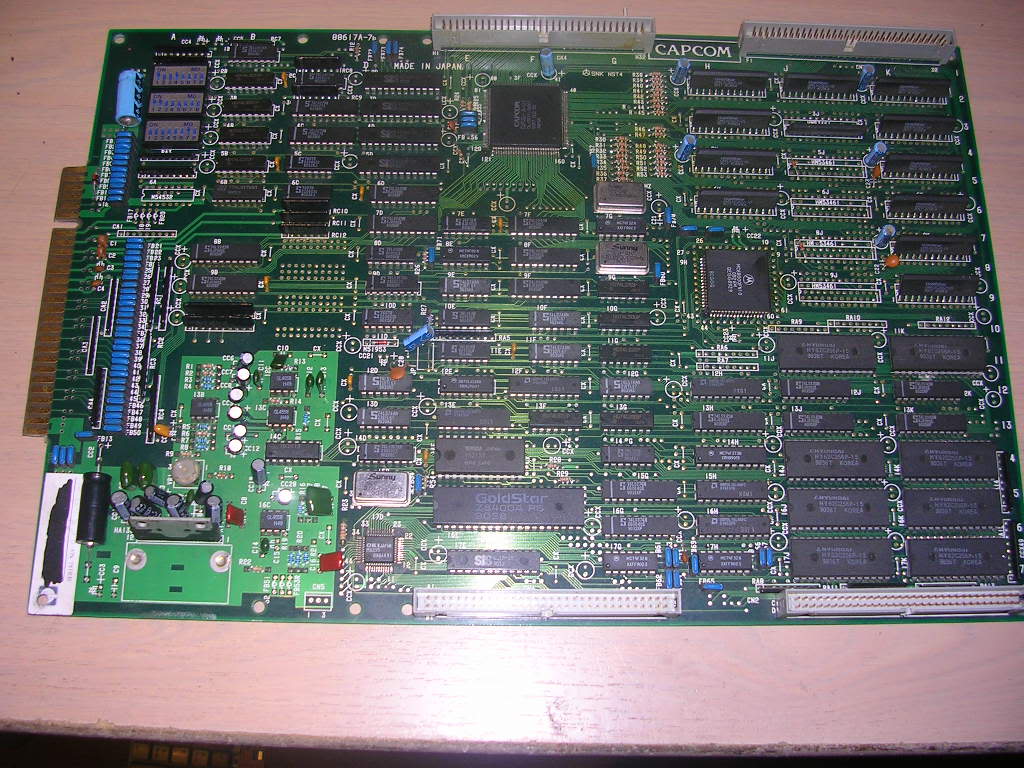
The couple of dozen or so Z80s I have removed from CPS1 boards over the past couple of years are all Zilog branded chips, this board had a Goldstar one and it was fine.
I was fairly sure I spotted the fault as soon as I unpacked it, for some reason this board had never had a heatsink installed on the main amplifier chip, and it was standing bolt upright. Even most bootlegs do it better than this and this was an original branded Capcom board. Even without a heatsink the amp chip should lie flat on the board and its legs should have a 90 degree bend in them to go through the board. On this board it was standing bolt upright...
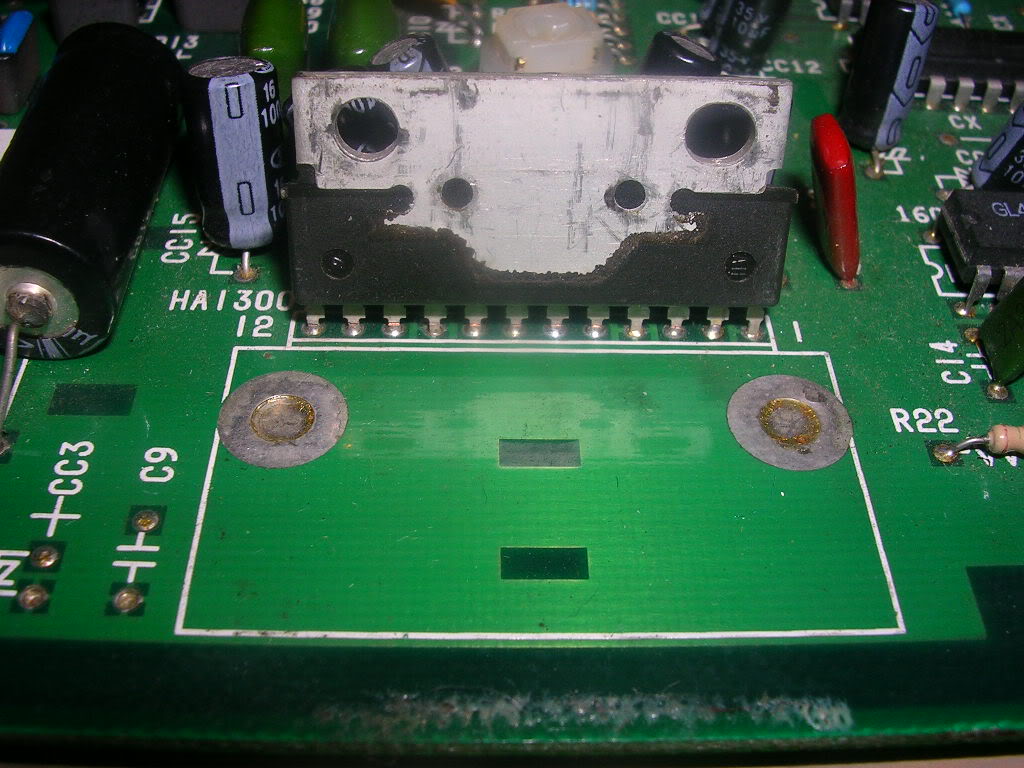
... how this survived twenty years like this I will never know.
The board was designed for a heatsink, I have one of this type of CPS1 board and it has a proper heatsink, bolted to the board and to the chip, but on this board the bolt holes were still filled with the original solder from when the board went through the flow soldering machine all those years ago. I think this one fell off the production line in the early 1990s and was overlooked by the heatsink guy.
An amp without a heatsink is going to get hot, too hot perhaps but in this case what killed it was the lack of structural support. Two decades of wobbling had fractured virtually every leg on the chip...
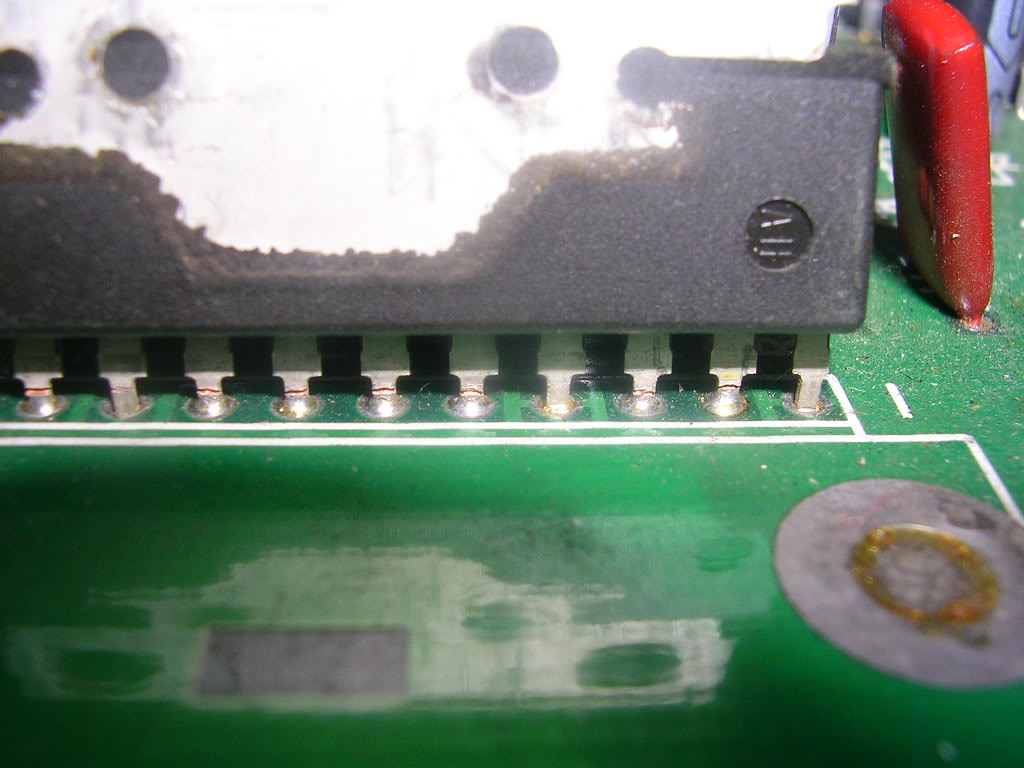
...the ones that were intact had major metal fatigue resulting in an ever more wobbly chip. Fairly certain this was the fault I powered it up and tried to press down on the chip to see if I could prove the amp chip or not. I got silence, so I waggled the chip a bit more to finally get it off the board.
A quick rummage through my scrap pile produced a long forgotten CPS1 A board, the same layout but this board was a wreck so much rust and track damage it is never going to be repaired. So the amp and heatsink were going spare...
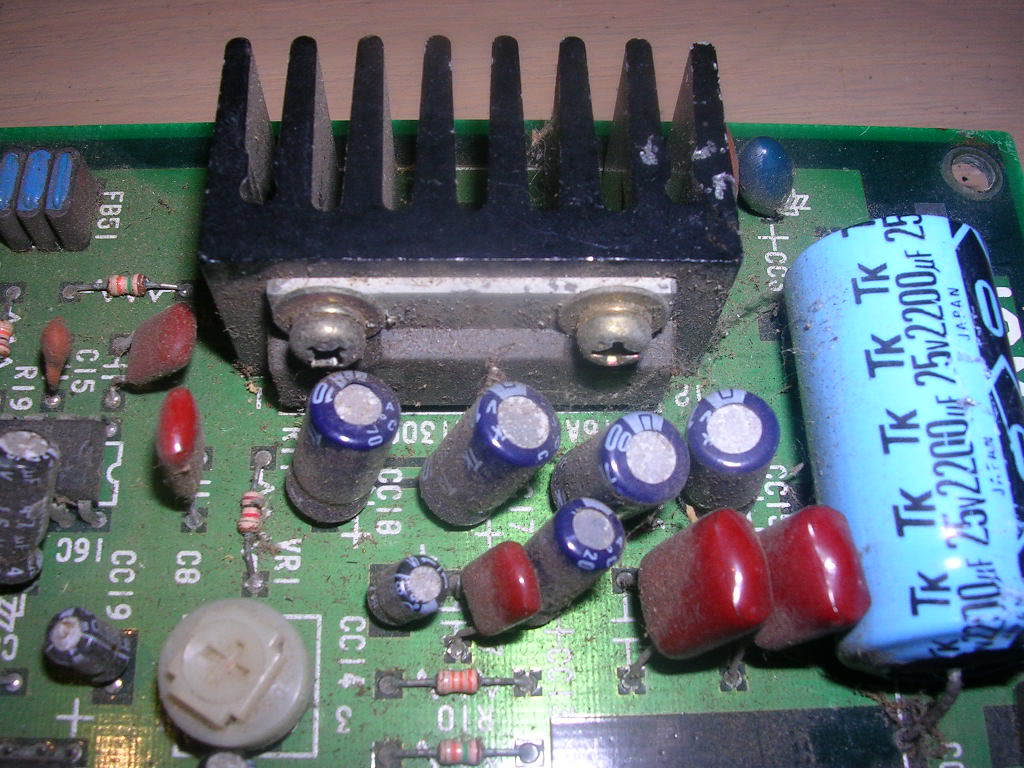
... a quick scoot round with the desoldering iron on Jatz's board...
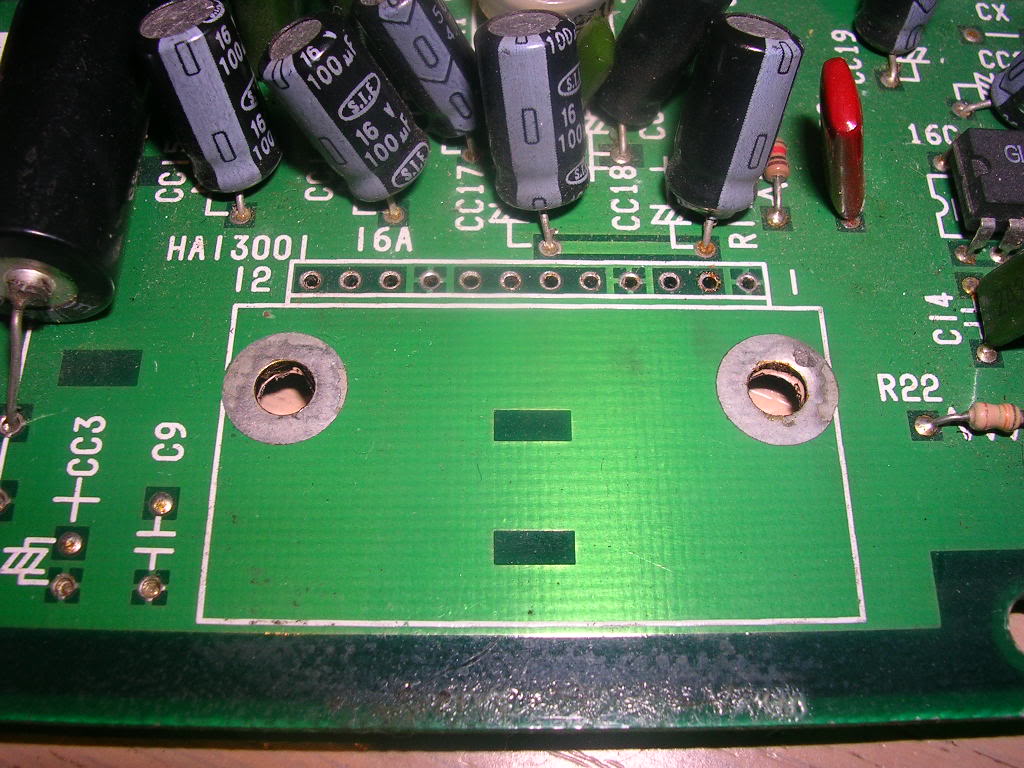
.... and the amp and heatsink were re-homed...
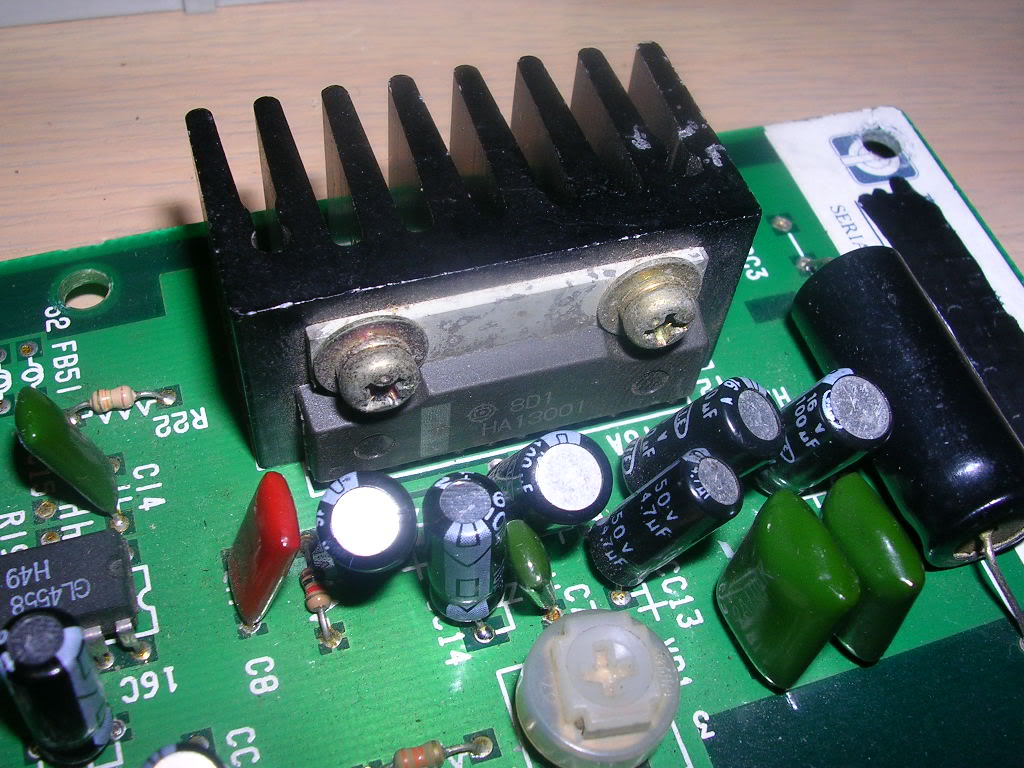
... the trick is to fit the amp to the heatsink (in this case it already was), insert the chip legs into the board and then bolt the heatsink on. Only then do you solder the chip legs in, this ensures that the legs are under zero stress. If you solder it in and then bolt the heatsink on it is likely you will have to bend something and you risk ripping legs out or crushing them into the board as you do up the heatsink bolts.
I also did a quick ESR test on all the caps, all but three 10uF 35V ones were fine, that three were 4x the ESR they should be so were probably on the way out, so they have been replaced.
When powered up under my Magic Sword B board all sounds were back, loud and clear.
Repairer: cal2
Forum Thread: CPS1 A PCB Repair
symptoms: the music sound level is ok, but sound effects volume is very low.
repair: I first suspected the OP AMP chip at 11B because it is directly wired to the output of the MSM6295 adpcm chip, but replacing it made no change.
Then I replaced the same OP AMP but at 11A, because it is used to mix the YM and ADPCM channels. Didn't change anything too.
Looking at the schematics, I found that between the output of OP AMP @ 11B (adpcm samples) and the input of the OP AMP @ 11A, there was a capacitor and a resistor.
The resistor is surface mount, and unlikely to fail.
I replaced the 10uF/16V capacitor @ CC10 and sound effects were back at the right volume.
Fix: replaced bad 10uF/16V capacitor @ CC10